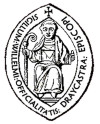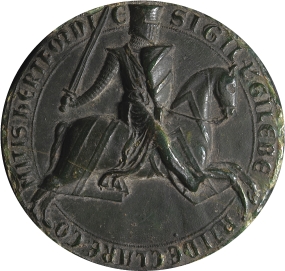Medieval Seals


I’ve had a few questions about the medieval seal depicted on my upcoming book, “Death of The Official”. The image on the left depicts the impression made by William Blackburne’s seal matrix. William is an official of the bishop of Draychester and the Latin inscription reflects this.
The status of the seals owner was often reflected in the actual size of the seal. In medieval religious hierarchy no one would be allowed to own a seal as grand as one issued by their own superiors! The cheaper seal matrices would be made of lead whilst wealthier owners would own a seal matrix made from bronze. The bronze seal matrices were harder wearing and therefore lasted longer. Lead is a fairly soft metal and seal matrices made of this material often broke.
In the middle ages the majority of seals were circular in design but ovals, triangles, shield-shapes and other patterns are not unknown. Generally, the design would comprise some sort of graphic emblem often incorporating a heraldic device. Surrounding this would be a text (known as the legend). Often this would just consist of something like “The seal of the [Name of Owner]”. At this time the seals of women and priests and other members of the clergy would be given a pointed oval shape (a vesical). The emblem would be a standing figure of the owner or in the case of clerical seals that of a saint. The medieval towns-person would sometimes use a seal with images relating to their trade but a variety of different emblems could be used.